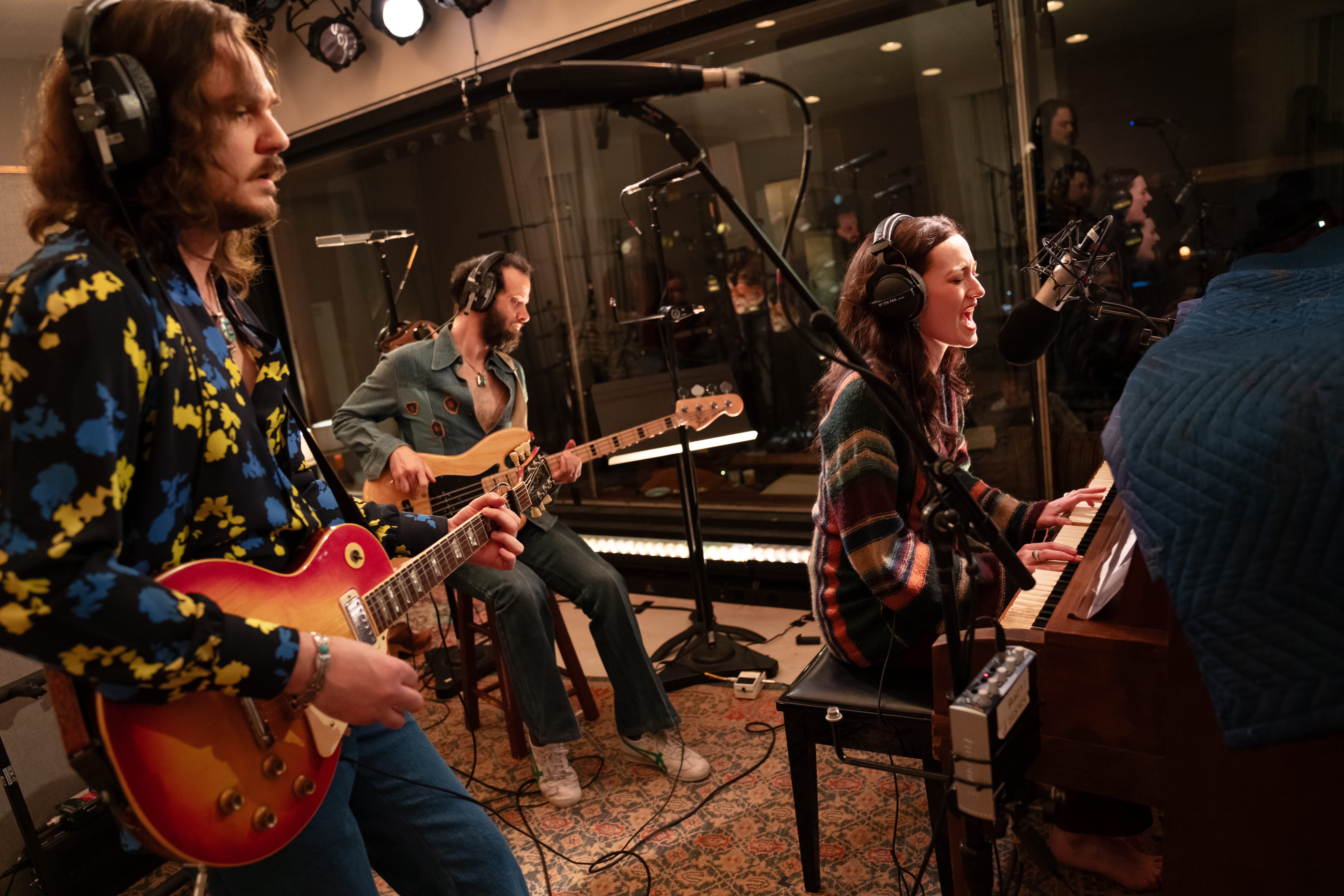Hey, Mister Rodgers!

One of Richard Rodgers and Lorenz Hart’s final collaborations, Too Many Girls, contains the song, “I Like To Recognize the Tune.” Now, more than 60 years later, not only are hundreds of Rodgers’ tunes immediately recognizable, but not a day goes by that at least one of Rodgers’ timeless melodies isn’t heard by somebody, somewhere. Right now, for example, alongside two hit Broadway revivals of Rodgers’ shows, Pal Joey and South Pacific, two other Broadway shows are using Rodgers’ melodies in more incidental ways. “The Sweetest Sounds” (from No Strings) wafts through the Samuel J. Friedman Theatre during Richard Greenberg’s The American Plan, and as audiences leave Will Ferrell’s show, You’re Welcome America: A Final Night With George W. Bush at the Cort Theater, The Vandals’ raucous rendition of “So Long, Farewell” (from The Sound of Music) serves as their exit music.
But perhaps the biggest Rodgers renaissance can currently be found on the CD shelf. For example, Tony Award winner Sutton Foster uses the title song to the musical Oklahoma! as the bonus track on her new CD Wish
(Ghostlight Records); it’s a song she began performing as a spoof when waitressing at an Italian restaurant where the other servers sang arias. Meanwhile, another Tony winner, the legendary Barbara Cook, has included Rodgers & Hart’s “Where or When” on her latest CD, Rainbow ‘Round My Shoulder
(DRG).
However, the most high profile of all current Rodgers projects is the starry two-disc recording of the 1947 musical Allegro
(Sony BMG Masterworks), recorded in Bratislava with the Istropolis Philharmonic Orchestra and featuring a slew of Broadway veterans, including Patrick Wilson, Audra McDonald and Laura Benanti. To date, the only major recording of this musical, a simple, Our Town-like allegory about a doctor from birth to mid-life crisis, has been the much-truncated original cast recording. But it preserved a mere 10 songs: a surprising abbreviation of the score, which is full of underscoring, scenes that develop into songs, and orchestral dance music. As Bruce Pomahac, music director of the new recording, explains: “Although many of the melodies are heard inside bigger pieces of music, they didn’t know how to record these sequences that had pieces of songs and fit them into three minute sides.”
To many theater historians, Allegro is extremely important, even if it was a commercial flop, as it is widely perceived as being the first so-called “concept” musical. “George Furth and Stephen Sondheim have said they were inspired by Allegro when they were writing Company,” notes Bert Fink, a senior vice-president for communications of the Rodgers & Hammerstein Organization. “If one is a lover of musical theater and one wants to absorb or drink in as much of it as they can, they can’t miss the chance to put this missing piece of the puzzle back into the puzzle,” he says of the new CD.
In a different vein, Richard Rodgers: Command Performance
(Harbinger Records) includes 29 minutes of Rodgers himself playing selections from little-known shows like The Girl Friend and Peggy Ann, in addition to the composer singing demos of songs for the long-forgotten 1935 movie Mississippi. What emerges is a quite different image from the one that Rodgers cultivated and put forth in his later years. “These performances are playful and they are certainly jazzy in quite a wonderful way,” says co-producer Bill Rudman. “This is a Richard Rodgers who was literally a twentysomething, and we hear this sassiness in these performances. These are some wonderful colors to add to our Richard Rodgers canvas.”

To hear an example of Rodgers during his later years, listeners can turn to Rodgers Conducts Rodgers, one of three digital releases of Rodgers music from Sony that are available exclusively on disc from ArkivMusic. Here, Rodgers’ music is performed by the New York Philharmonic under the direction of the great man himself. In addition, the new release includes five bonus tracks of interviews with the composer that were meant to be used as promotional spots on radio. To compare Rodgers’ work at the keyboard with the somewhat reserved man being interviewed is an extraordinary experience.
Even as these discs look backwards, jazz musician John Pizzarelli’s recently released all-Rodgers CD With a Song in My Heart
(Telarc) looks forward. Pizzarrelli — who will perform some of these tunes at his American Songbook concert at Lincoln Center on February 21 — says the CD is a major change in direction for him.
“I’ve never done a record of the upper tier composers for the Great American Songbook; but it’s just such an amazing body of work,” he notes. Pizzarelli adds that both the CD’s title track and “She Was Too Good to Me” reference the arrangements that were first made for the legendary trumpeter Chet Baker by Don Sebesky, who has done the arrangements here as well. Interestingly, Pizzarelli’s disc also includes “Mountain Greenery,” a Rodgers and Hart song from 1926 that’s used in Allegro to define the period for a school dance. Like so many of Richard Rodgers’ tunes, it’s instantly familiar.










